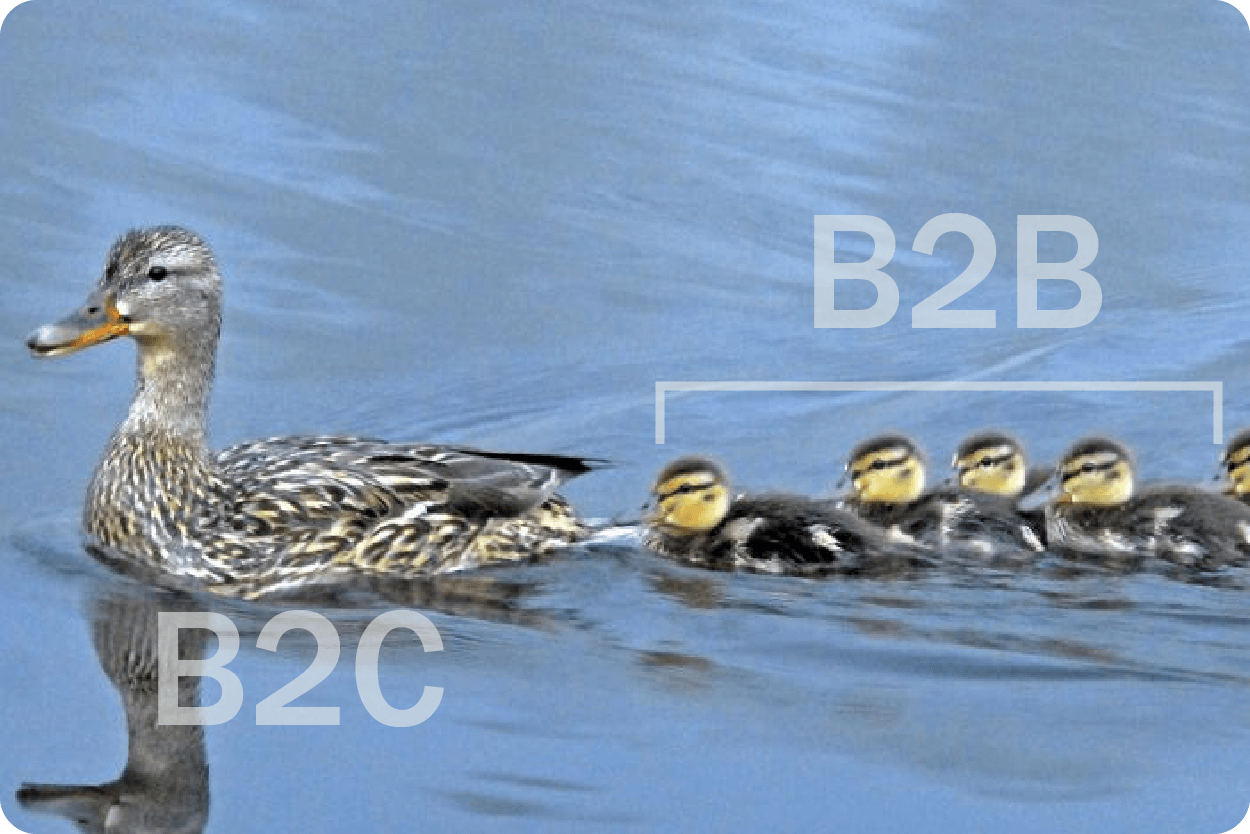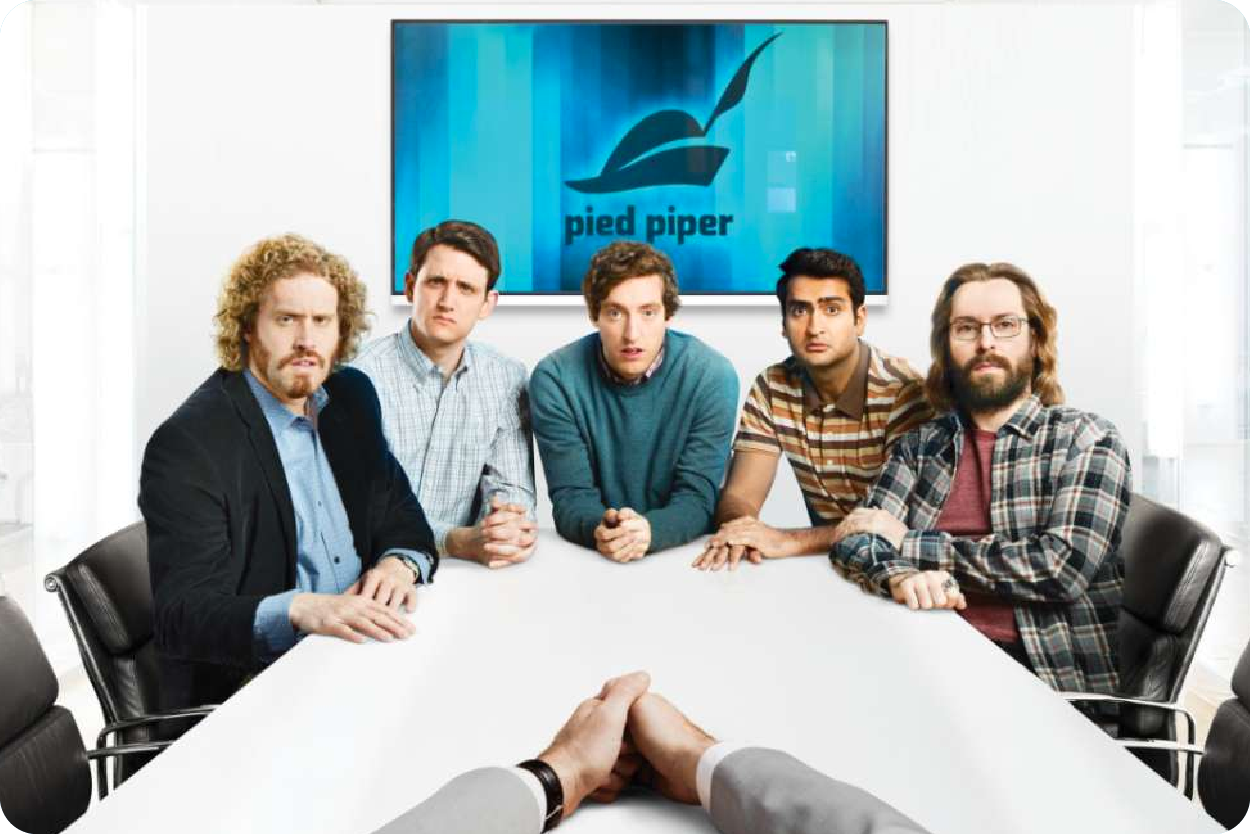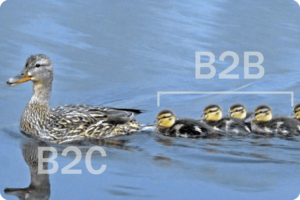
In marketing there are commonly two very distinct schools, B2B and B2C. For the most part, everyone thinks that these schools are completely different. In their defense, there are vast differences in advertising channels, sales tactics, and the length of the sales cycle.
- Advertising Channels – Facebook might be a great avenue in B2C, for B2B.. a lot of companies block Social Media. Which you could imagine, makes it tough to receive ads.
- Sales tactics – Spontaneous purchases / impulse purchases (or for me putting a Mr. Goodbar in the point of sale counter), in B2B you have explain yourself to your boss. “Yeah sorry Bossman, decided to buy a 5lb bag of glitter with the weekly office supplies.. at the time.. I felt like our office could use some pizzazz!!”
- Longer sales cycles – Of course the sales cycle is longer, you are dealing with a group of humans.. not a single person. Can you remember a time when you tried to go out to lunch with a group of coworkers? You throw out an idea that is combated by a variety of different schedules, eating habits, and objections.. By the time there is a decision you are more excited to to reach an agreement than eating.
But even after all these differences, B2B is just a group of consumers.
We are all consumers and just because we go to a job, we don’t stop being a consumer. We still hold keep our preferences, our needs, and our wants – we just typically start thinking about the needs and wants of an organization over our own during the 9-5.
And because of these preferences from our personal life, B2C trends typically tend to sneak into and shape B2B behaviors. A great B2B marketer therefore should not look for a completely new idea to transform B2B, but instead dive into current or upcoming B2C trends and see how they can be applied to their business processes. If this is executed in a rather short time-frame, B2B businesses will find themselves light years ahead of the competition.
To drive this concept home, here are some large areas that B2B adopted WAY late, but are now a staple in B2B.
eCommerce
B2B is typically referred to as the slow giant, a giant in buying power.. but it tends to go at snail’s pace.
B2B eCommerce is an area that has proven itself as the avenue for growth. Its revenues are increasing at 2-times the speed of B2C and are projected to hit 6.7 Trillion in sales by the end of 2020.. it is hard to think that any business does not believe e-Commerce is the future of B2B purchasing.
Yet believe me people still do! See B2B for the longest time has been about personal relationships and face-to-face ordering. Originally when eCommerce started in B2C, B2B was quick to push it aside thinking that it would never fit. If they would have implemented at the same time as B2C they would have been correct. This drastic of a change would have come with a massive learning curve, that is why it is best to FOLLOW B2C but not lead.
By following B2C trends, B2B companies can grow sales through new technologies because it is the new preference of buyers, but they do not have to train new buyers because they use it in their consumer purchasing.
Companies like Grainger quickly realized the online advantage and popularity and adopted e-Commerce into their sales strategy. It became a cost efficient way to grow their distribution and new customer acquisition. Their timely integration of this technology led them to dramatic growth and an increase in market-share (especially for online sales). Although many companies are now starting to implement an online store, very few have the power to take market share, unless your Amazon Business ($8.6 billion in sales first year released).
Free and/or Fast Shipping
Remember years ago when Amazon started doing free shipping? Everyone thought they were utterly insane and that it made their margins too thin. Well they clearly proved us wrong, they showed how a great customer experience can grow a business exponentially in no time.
Although, now because consumers are use to it from Amazon, every other online retailer must follow suit to remain competitive.
This has also trickled into B2B, with the evolution of eCommerce there has been a smaller emphasis on one-to-one relationships and more on the experience of buying. This explains why so many B2B eCommerce sites fail!
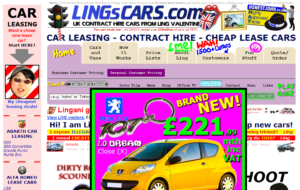
(Not a B2B site.. but you get the point)
Companies launch these prehistoric ill designed websites and say, “Customers you can now order online!” but they never seem to ask themselves what their competitive advantage is after launching. With the online store eliminating the need for the one-to-one relationship there is no emotional connection to your brand outside of it’s online customer experience. Fast and/or free shipping is a great way to remain competitive and offer that customer experience consumers crave.
Emotion
I can guarantee that either you are or you know a friend that is utterly loyal to a brand. The one brand that pops into my head is Apple.
They have a cult following that if they see you with an Android they will almost immediately become offended. They just can’t comprehend why someone would ever buy something that was not Apple. The best part about it, is that they typically can not say one thing that makes an iPhone better on a technical or feature based standpoint. But the one thing that is clear, they are emotionally attached.
For a long time emotional selling that creates a loyal consumer base was largely seen as only a B2C tactic. B2B was seen as the opposite, a completely logical and unemotional purchasing behavior.
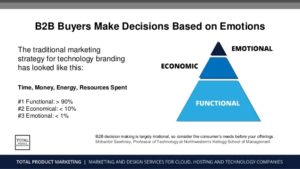
But that is far from the truth.
I can say this because I am a member of a VERY loyal B2B consumer base, HubSpot. I remember attending Inbound and hearing the story about how HubSpot grew to where it is now. It gave me hope, the values of HubSpot directly aligned with the values of my company and personal beliefs.
How do I know I am emotionally attached? I really can’t tell you how Hubspot Marketing Automation differs from Marketo, Pardot, Eloqua, SharpSpring, etc. because truly I do not care, in my eyes there is only one marketing automation platform.
B2B businesses need to position themselves to take advantage of this B2C tactic, yes features, benefits, and product specs matter, but if you can align your business values with your target market’s – your competition begins to disappear.
Other areas B2B followed
When writing this article. Here at this exact point in typing I noticed the word count and thought, TL;DR – so I sparknote’d the rest below. Please let me know if you have any questions as I am happy to explain. Also have some to add? leave it in the comments.
- Social Proof Selling – Using reviews to increase conversion rates by decreasing perceived risk.
- Persona Marketing – In-depth demographics and psycho-graphics to speak directly to decision makers.
- Content & Social Media Marketing – Generating shareable content to reach your audience.
- Chatbots – Automated customer service and self service technology.
Conclusion
B2B and B2C marketing are not as different as we commonly make them out to be. Purchasing decisions are still coming down to individual(s) that have consumer preferences. In order for a B2B marketer to grow with the times, they should look at the B2C market now and analyze current trends and ask a couple questions:
- Will this trend be full adopted by the general public?
- If it is, how will it look in B2B and how can I prepare my business for it?
Areas that this might fit:
- Augmented reality or virtual reality – Help understand complex products, or online buying if you can witness a product remotely
- Cryptocurrency – becoming more widely used as a B2B payment, especially in an international setting.
B2C just subscribed a minute ago.
Time to follow.
[mc4wp_form id=”428″]

